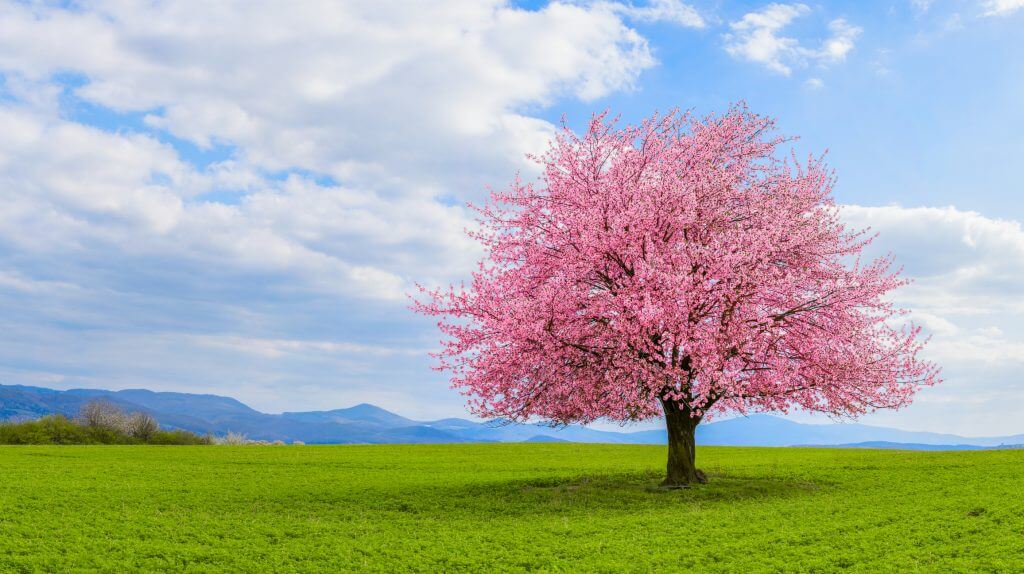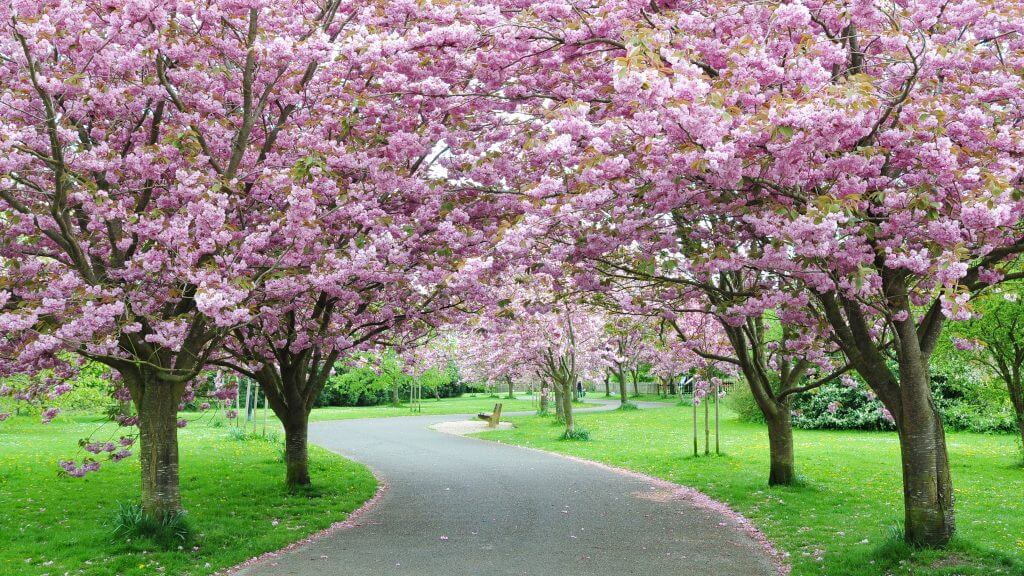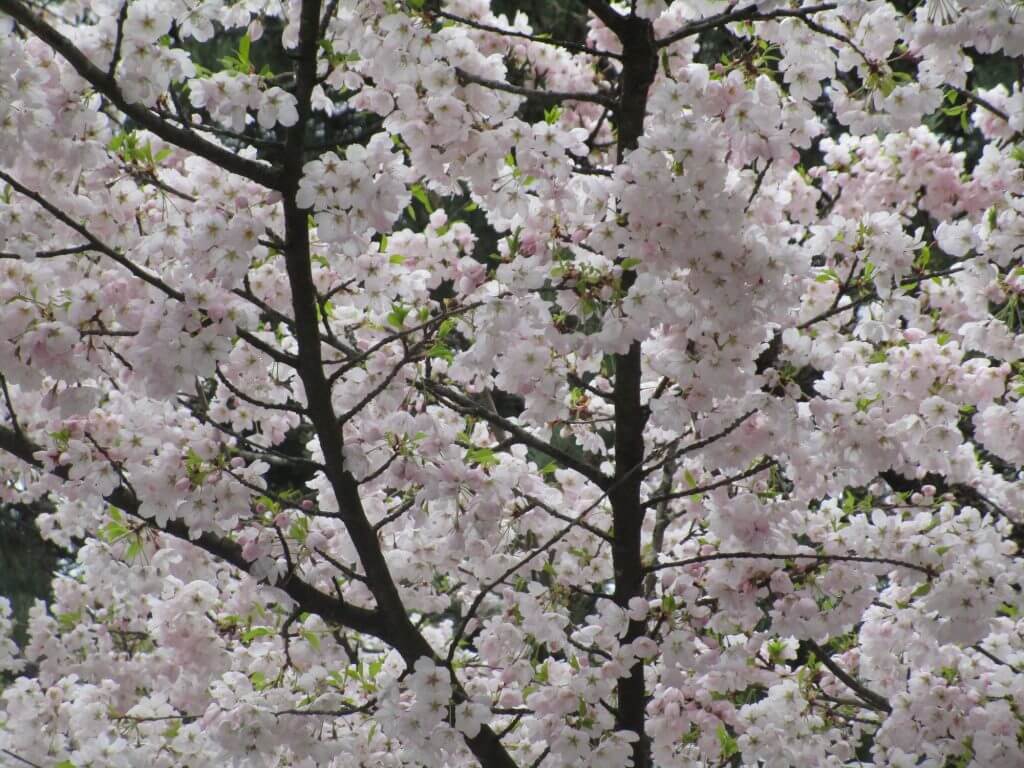Cherry blossoms are probably one of the most-awaited annual phenomena in certain parts of the world.
The cherry blossom trees produce their dainty-coloured blooms during a short period, which make it seem even more magical and intriguing.
One need not travel to Japan, Korea, or other parts of the world to enjoy the blooms of the cherry blossom trees—you can have them literally in your own backyard.

The Basics of Cherry Blossom Tree
Cherry blossom trees, also called Sakura, are of the genus Prunus.
The most common cherry blossom tree in Japan is the Somei Yoshino which produces pink or white blooms in spring.
The spectacular show lasts for about two weeks, some for only about a week.
Although they are in the same genus as the trees of edible cherries (p. avium and p. cerasus), the fruit of the cherry blossom trees is not palatable or edible.
But even if the cherry blossom fruits are not edible, the flowers and leaves can be used for tea or even as ingredients to food, mainly for desserts like cookies, cakes, candies, and even ice cream.
Cherry blossom trees grow in temperate climates.
The average size of the cherry blossom tree at maturity is about 20 to 40 feet (6 to 12 metres) tall and can have canopies 15 to 30 feet (4.5 to 9 metres) wide.
These trees are relatively short-lived, lasting only for about two decades. However, some cherry blossom trees in the wild live up to 250 years or more.
Here is a list of some popular varieties of cherry blossom trees
Prunus campanulata
Also called Taiwan cherry, bellflower cherry, or Formosa cherry.
Native to Japan, China, Taiwan, and Vietnam, this is a large shrub or small cherry blossom tree.
It grows to about 10 to 26 feet (3 to 8 metres) tall. Its blossoms are usually deep pink to fuchsia.


Prunus cerasoides
Also called wild Himalayan cherry or sour cherry.
This is a deciduous cherry blossom tree from East, South, and Southeast Asia.
The Himalayan cherry can grow up to 98 feet (30 metres) tall and produces light pink flowers.


Prunus padus
Also called bird cherry, hagberry, hackberry, or Mayday tree.
The hackberry is a deciduous shrub or small tree that can grow up to 20 feet (6 metres) tall.
This native of Northern Europe and Northern Asia has white blooms. The fruit, leaves, and even stems of this tree can be poisonous to some mammals.


Prunus pseudocerasus
Also called Chinese cherry or Chinese sour cherry.
This is a native to China.
It blossoms in early spring, producing light pink flowers about 1 inch (2 to 2.5 cm), with reddish buds. It grows to about 26 feet (8 metres) tall.


Prunus sargentii
Also known as North Japanese Hill cherry or Sargent’s cherry.
This deciduous tree is native to Japan, Korea, and Russa and produces pink flowers of about 1 inch (2.5 cm).
It grows to around 20 to 40 feet (6 to 12 metres) tall and canopies to about the same size.


Prunus serrulata
Also known as Japanese cherry, oriental cherry, hill cherry, East Asian cherry.
Japanese cherry is a small deciduous tree that is native to Japan, China, and Korea and produces white to pink flowers.
It grows to around 26 to 40 feet (8 to 12 metres) tall.


Prunus subhirtella
Also known as Higan cherry, spring cherry, rosebud cherry, winter-flowering cherry.
The Higan cherry is a small deciduous tree that is native to Japan and produces white to pink flowers.
Unlike most cherry blossom trees that bloom in spring, this one blossom in autumn all through spring, that is why it is called the winter-flowering cherry.


Prunus verecunda
This specie is native to Korea and the mountainous regions of Japan.
This cherry blossom tree produces white to bright yellow flowers.


Planting Your Cherry Blossom Tree
Just like its dainty blooms, the cherry blossom tree itself can be very delicate when it comes to planting them.
These trees require specific conditions to grow. Otherwise, your efforts to plant them will be in vain.
Cherry blossom trees are usually planted any time between autumn to early spring, as long as there is no risk of frost.
Before getting your cherry blossom tree, keep in mind that these trees are self-pollinating, so they need to be planted in groups if you want to see them bloom.
Next is choose a position for your cherry blossom trees that is protected from harsh winds and extreme heat or cold, but have access to full sun.
The sakura trees need nutrient-rich, slightly acidic, and well-draining soil.
Consider the mature size of the cherry blossom trees you chose when spacing them out. Usually, 10 to 20 feet (3 to 6 metres) is enough.
Dig a hole for your cherry blossom tree that is twice the size and depth of the root ball. Add a layer of organic matter at the bottom for the cherry blossom tree’s roots to sit on.
Backfill until level with the ground, and the cherry blossom tree’s roots are adequately covered.
A stake or support may be needed until the tree has set its roots in the ground.
Water thoroughly and sprinkle the appropriate fertiliser around the base.
A deep mulch of about 2 to 3 inches (5 to 7.5 cm) is needed to prevent the soil from drying out.
Caring for Your Cherry Blossom Tree
You need to watch and care for your tree, especially when it is newly planted or transplanted.
Water when needed, but do not overwater. See when the top of the soil is dry and then water deeply. Do not wait for too long in between watering to avoid drought stress.
Prune your cherry blossom tree when you see diseased leaves or branches. It does not require much pruning, but deadheading is essential to keep the tree healthy and prevent the spread of diseases.
Feed your cherry blossom tree in spring.
Common Problems with Cherry Blossom Tree
Like most plants, aphids can be an issue with cherry blossom trees.
There are also black cherry aphids that need to be addressed as soon as possible because they can cause infection to your tree. Use an appropriate insecticide to address this.
Black knot fungus can also be an issue with cherry blossom trees. Light brown or brown small growth will appear at the joints or branches. Remove the infected stem as soon as possible to avoid the spread of the fungus.
Watch also for silver leaf fungus which could make the cherry blossom tree’s leaves appear grey or silver in certain spots. Cut the branch of the diseased leaves. Make sure to clean your tools before and after using them to prevent the spread of diseases to other parts of the tree or other trees.
[elementor-template id=”4604″]
[elementor-template id=”6387″]
